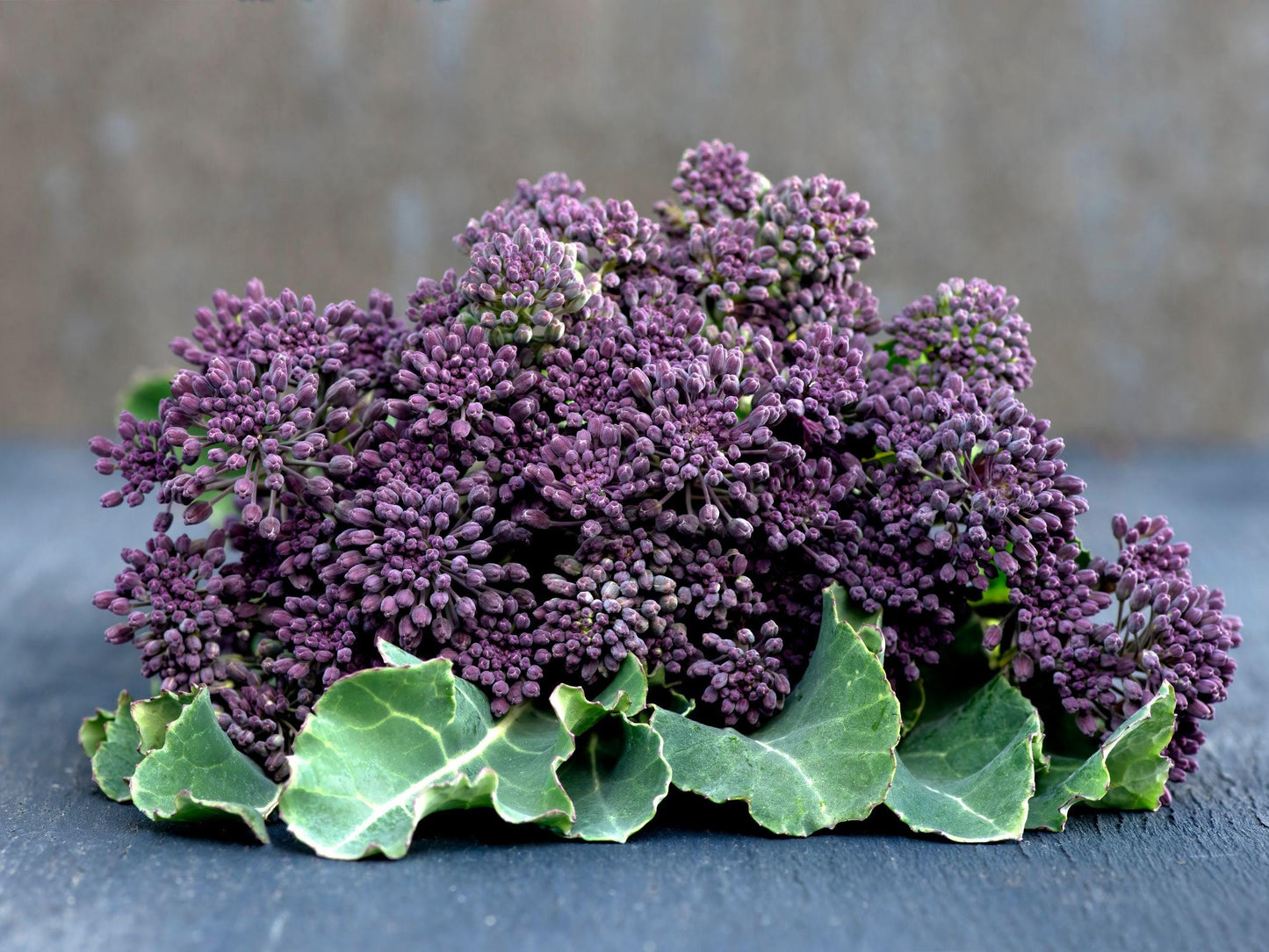(Brassica oleracea) An heirloom delicacy, but so easy to grow. This sprouting broccoli produces very flavorful purple heads. Once the main head is removed it will continuously produce many offshoots during the season.
Purple Sprouting Broccoli adds great color and nutrition to the table when raw, turning green when cooked. Excellent color choice for garnishes or using fresh in salads. An extremely easy to grow hardy spring and winter vegetable.
• Scroll down for detailed growing info •
All Nimble NiteCap Seeds are:
• Heirloom
• Organic
• Non-GMO
• Open Pollinated
• Untreated
• US Grown
• growing instructions included
• Regular testing is conducted to uphold the highest germination standards, all the while employing appropriate seed storage techniques.
Sustainable Packaging & Shipping:
• NimbleNitecap seeds are packed in eco-friendly, compostable seed packets. Seed packets are printed in house with vegetable-based inks on biodegradable, recycled materials. (Small plastic bags are infrequently used to prevent the loss of very small seeds.)
• All orders are carefully packed and shipped with tracking via USPS First Class (or Priority, if selected) in padded ECOENCLOSE recycled and reusable mailers, or recycled boxes to protect your items in transit.
Most orders ship out the same or next business day! Please note that this time may be extended during peak season.
• FREE SHIPPING on all orders of $35 or more. Flat Rate shipping no matter how many packets you order.
• DIRECTIONS •
~ sowing ~
Purple Sprouting Broccoli Seeds grow best in cool weather, so starting the seeds indoors 5-6 weeks before the last expected frost will ensure a faster crop. Shortly after the last frost, prepare the ground with organic matter or fertilizer; when the seedlings reach about 6" tall, plant them 1-2' apart in rows 2-3' apart.
For direct sowing seeds, plant these purple sprouting broccoli seeds 1/2" deep and 12" apart in full sun and rich soil, after the last expected spring frost; thin them to 3' apart. Keep the soil moist.
~ growing ~
Keep the young plants watered and remove weeds carefully. Mulch helps discourage weeds and regulate soil temperature, and several applications of fertilizer or compost will also be needed.
~ companion planting ~
For companion planting benefits, plant broccoli with herbs, potatoes, or onions; avoid planting it with tomatoes or pole beans.
~ harvesting ~
The first small heads of broccoli should be ready to harvest in early spring, about 220 days after planting. Harvest them while they are still tight, and before the tiny buds begin to open; cut them with the stems attached, since these are also edible.
Side shoots will continue to develop along the stem, and can be harvested as well; the plant will keep producing as long as weather conditions are favorable.



















